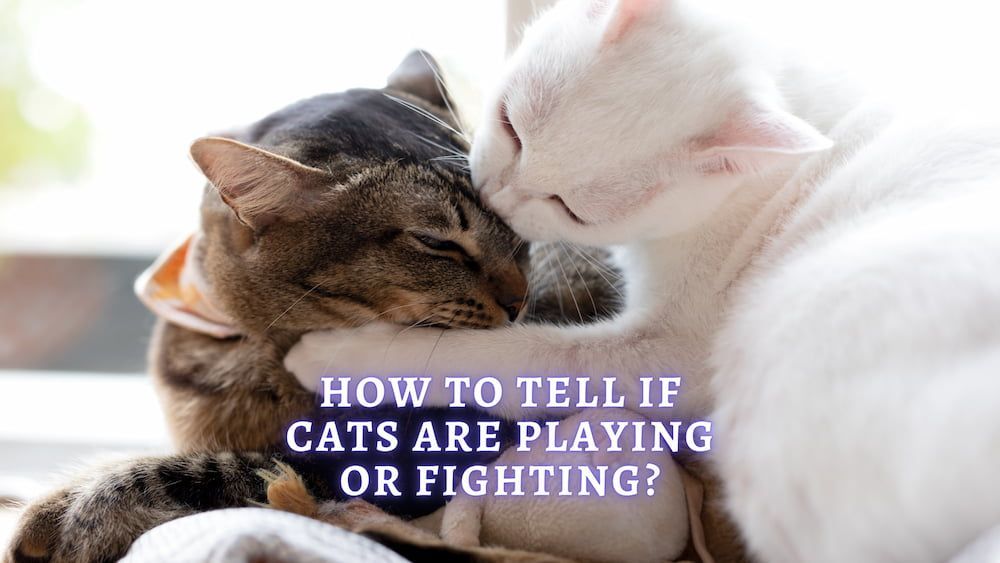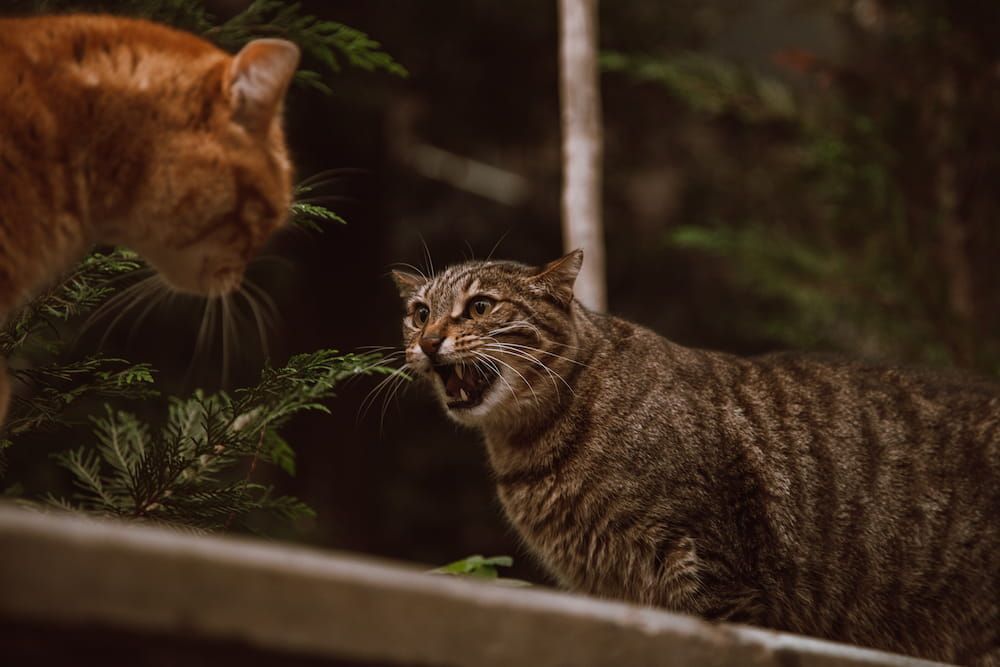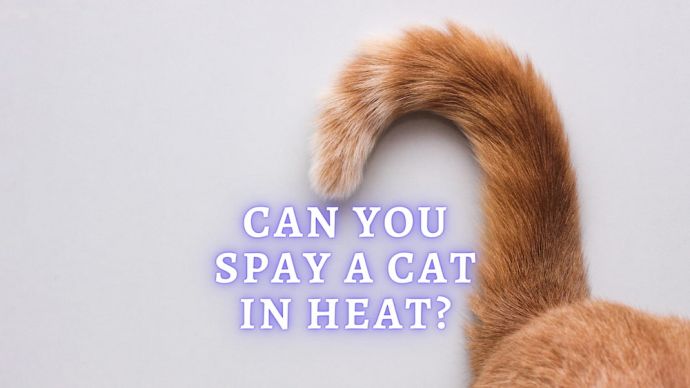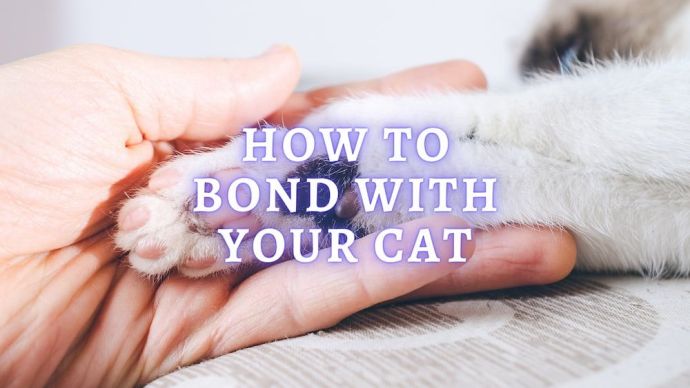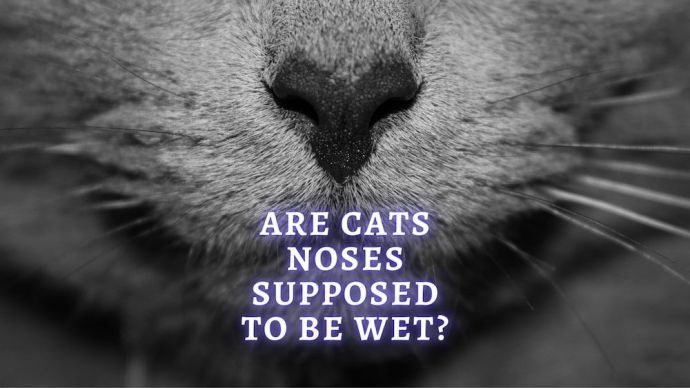Cats Playing or Fighting: How to know Cats are Playing or Fighting?
Written by:
Author: Nicole McCray
Nicole worked mainly with dogs and cats on her family's facility and in her time as a technician. However, she's also worked with and treated a plethora of other animals, like horses, birds, guinea pigs, bunnies, goats, and even the occasional hedgehog.
View all 6 articlesLearn about our editorial process and veterinary review board.
Viewed: 218
Updated on: 03/28/2022
Cats are wonderful pets that start to practice and learn crucial survival skills earlier on as kitties. They begin to work with their claws and teeth to get a hold of what they can do. In multi-cat households, this may involve a lot of play among the pets that sometimes seem rough.
The hissing sounds the cats make and the mock fights they get into may leave you wondering whether your pets are playing or fighting. Knowing the difference between cat fight and pets playing with each is essential to maintaining a harmonious household.
This post will explore the different ways to determine whether your pets are playing or fighting and other essential aspects you should keep in mind.
How to Tell if Cats are Playing or Fighting?
I bet this is one of the questions you have asked yourself to help decipher how your pets relate with each other and how you can help. Living with felines requires learning more about cat behavior to better take care of them. [1]
Generally, cats are very playful and tend to make your household quite lively. If you observe them closely, you’ll be impressed at how they use their paws and put up mock wrestling matches with each other.
In most cases, pets play manifest as stalking, pouncing on each other, harmless biting, and chasing. However, a cat may become overstimulated during these play sessions and take the games too far, especially if its counterpart is not as excited.
The difference in their stimulation levels may lead to a fight where one wants to play more while the other is tapped out. But how do you know the difference between cats playing or fighting? [2] The primary key is to observe their body language and the sounds they produce.
Signs That Your Cats are Playing
When observing your cats’ play, here are some signs to help you ensure that they are playing and not fighting.
- Their bodies are always leaning towards each other.
- Their ear position is normal or slightly forward.
- They are playing while claws retracted to avoid scratching each other.
- The fur on the pets lays flat and is not puffed up.
- Only engaging in minimal play bites that don’t cause any injuries.
- No hissing or growling sounds at each other.
- They practice equality, chase each other in turns, and share their toys.
Signs That Your Cats are Fighting
You can easily mistake fighting for playing if you don’t know the difference. So here are some of the signs that your pets are fighting and exhibiting aggression.
- The retraction of claws they can use to scratch each other or on other surfaces.
- Puffed up fur and the appearance of the cat’s body looking bigger than it usually is.
- The mouth opens with the teeth ready to bite, producing hissing and growling sounds.
- Their whiskers are forward and spread out.
- They have an aggressive stare with eyes wide open and the pupils dilated.
- Ears facing back towards the head.
- Lack of reciprocity when chasing a cat for too long until it decides to hide.
- Bodies leaning away from each other.
Why Do Cats Fight?
Cats develop their social skills as early as two to four weeks while still kittens. Their social behaviors help them survive and easily interact with people and others. For example, they learn how to rub against each other, pounce on toys, and play with other pets.
However, as they learn to develop their social behavior, you’ll find that most pets also develop different types of aggression. These aggressions shift the innocent play to a full-on fight.
Vets from Bondvet in Park Slope, Brooklyn [4] categorize aggressions into four major types that are pretty common in most households. These aggressions result from different factors and eventually lead to fighting.
In addition to the aggressions, other aspects also lead to pets fighting and can be mitigated with the proper measures. Here are the four types of aggression and other reasons why pets fight.
Territorial Aggression
How spacious is your home? Most felines love to mark their territory and have enough space that they know is their own. Therefore, with limited space, you find that most cats will be pretty aggressive and fight to keep off others.
Territorial aggression is especially a significant concern in multi-cat households where they all have to co-exist in one space. The instincts sometimes lead them to isolate themselves from others and build territory for themselves.
To help avoid catfights and reduce territorial aggression, consider giving each pet their own space where they can establish their environment. For example, give each one of them their own litter box, toys, treats, food dish, and any other things they like to help provide them with space from each other.
RE:ATED: Why Is My Cat Pooping on the Floor?
Maternal Aggression
Maternal aggression happens when cats give birth to their little ones and protect them from perceived threats. These threats could come from other animals and people in the household.
Due to maternal aggression, a mother will often fight with other pets to keep them away from the kitties. To help avoid this, give the mother cat and her kittens their space away from loud noises and other animals. With the mother cat well-situated, its maternal aggression will be easier to control and maintain a more peaceful environment around other pets.
Fearful Aggression
Felines also exhibit aggression when they are in fear of something. Fearful aggression is more common when a cat is in a less familiar environment or interacting with a new cat. When you introduce kitties to each other, you’ll need to be cautious to avoid aggravating them.
If the pets feel threatened by the other cat, they will start fighting and squash your efforts of bringing them together. This type of aggression is easy to manage by giving your pets time to get used to each other and making them more comfortable in their new environment.
Food Aggression
Cats need enough food resources to stay healthy and keep active. If they lack food, you’ll find that this may result in aggression and catfights. These fights would typically be triggered by seeing others nearby having their meals.
The cats will turn to their survival instincts and fight other pets to get their share of the food. To avoid this, ensure that you pay attention to the feeding habits of your kittie. Taking your time to learn more about your cat behavior will help you decide on the amount of food each cat needs. With enough food, the pets will not be triggered into fights.
Illness
Some cats may start fighting without provocation and always look for trouble. You may mistake this for your cat is playful, but they may need to get checked out. Going to your vet for an appointment will help treat your cat’s illness on time and avoid other complications.
Cat’s Genes
Your cat’s genes also play a role when it comes to why they keep fighting with other pets . This is especially the case with oxytocin receptors found in some felines. Oxytocin receptors contribute to the cat’s irritability resulting in catfights.
RELATED: Why Do Kittens Bite?
How to Stop Cat Fights?
When you see your pets fighting, your first thought may be to rush in and physically separate them or stand between them. However, separating catfights physically may leave you injured and nursing some severe wounds.
In addition, the claws and teeth of cats are pretty sharp and contain bacteria and other pathogens that would affect your health. Therefore, consider working with additional options to help you separate your pets quickly and safely. Here are some ways you can stop catfights.
Use water guns
Water guns are an effective way to stop fights but may be pretty shocking and affect anxious cats in other different ways. Be cautious in using this method!
Throw a towel on each cat
One thing about cats is that they are very easily distracted. For example, throwing a towel on the cat and covering them will have them busy trying to get out while still playing with the towels.
Separate the cats by using barriers
Putting cardboard or a plastic board in between cats fighting is very effective. They won’t interact with each other and continue to feed their aggression. Once they are calm, try to place each cat in its particular place to help them build their territories.
How to Minimize Cat Fights
You can find ways to stop catfights but minimizing them is way better. With minimal catfights, you’ll have a more peaceful home and encourage harmonious living. Here are different ways to reduce fights that you can try.
Reduce stress
When pets are under stress, they tend to let it all out on others pets and fight a lot. Therefore, reducing stressors such as less food, too much noise, and other aspects will help minimize the fights between your cats.
Keep the cats separate
As we discussed earlier, pets love to mark their territories and have somewhere specific that is theirs. So, take your time finding multiple resources, evenly distributing them among your cats, and station them in different parts of your home. Separating them will help reduce fights significantly since they can all retreat to their own spaces.
Use diffusers
Some diffusers help make cats’ environment more cozy and calm to co-exist. These diffusers produce vapor that mimics pheromones giving your pets the signal that they are safe. [3]
Reintroduce your cats
If your pets keep fighting, it’s time to consider reintroducing them to each other to help reduce the fights. To reintroduce your cats to each other, you’ll first need to separate them.
After they are separate, try feeding them on different sides of the same door. This will help them get acquainted with each other’s scents once again. When they get to calmly feed on opposite sides without any irritation and hissing, introduce a barrier where they can see each other during mealtime.
Afterward, you can go ahead to introduce supervised playtime to see how they’ll relate to each other and get to reintroduce your pets to each other successfully.
Article Sources:
- Bernstein, Penny. “Behavior of Single Cats and Groups in the Home.” PubMed Central (PMC), 1 Jan. 2006, ncbi.nlm.nih.gov/pmc/articles/PMC7149619/.
- “Are These Cats Playing? A Closer Look at Social Play in Cats and Proposal for a Psychobiological Approach and Standard Terminology.” PubMed Central (PMC), 1 Jan. 2021, ncbi.nlm.nih.gov/pmc/articles/PMC8343019/table/T1/.
- McKenzi, Brennen. “Pheromones’ Therapeutic Use in Animals.” Veterinary Practice News, veterinarypracticenews.com/pheromones-therapeutic-use-in-animals/.
- Animal Hospital Bond Vet – Park Slope, bondvet.com/c/park-slope-animal-hospital.
 Cat Care Why Is My Cat Always Hungry? Vet-Approved Advice on Dealing With Hungry Cat
Cat Care Why Is My Cat Always Hungry? Vet-Approved Advice on Dealing With Hungry Cat - 348
- 0
 Cat Care How Often Do Cats Poop? Cat Poop: Normal, Problems, Constipation, Diarrhea, and More
Cat Care How Often Do Cats Poop? Cat Poop: Normal, Problems, Constipation, Diarrhea, and More - 203
- 0
 Cat Care Why Does My Cat Attack My Legs? 10 Reasons Why and What To Do About It (Vet-Approved Advice)
Cat Care Why Does My Cat Attack My Legs? 10 Reasons Why and What To Do About It (Vet-Approved Advice) - 46013
- 21
 Cat Veterinary Tips Cat Stomach Gurgling: Vet Advice on Why is Your Cat Stomach Gurgling?
Cat Veterinary Tips Cat Stomach Gurgling: Vet Advice on Why is Your Cat Stomach Gurgling? - 36469
- 4
 Cat Veterinary Tips My Cat Lost its Voice: Can Cats get Laryngitis? (Vet Advice)
Cat Veterinary Tips My Cat Lost its Voice: Can Cats get Laryngitis? (Vet Advice) - 23554
- 13









